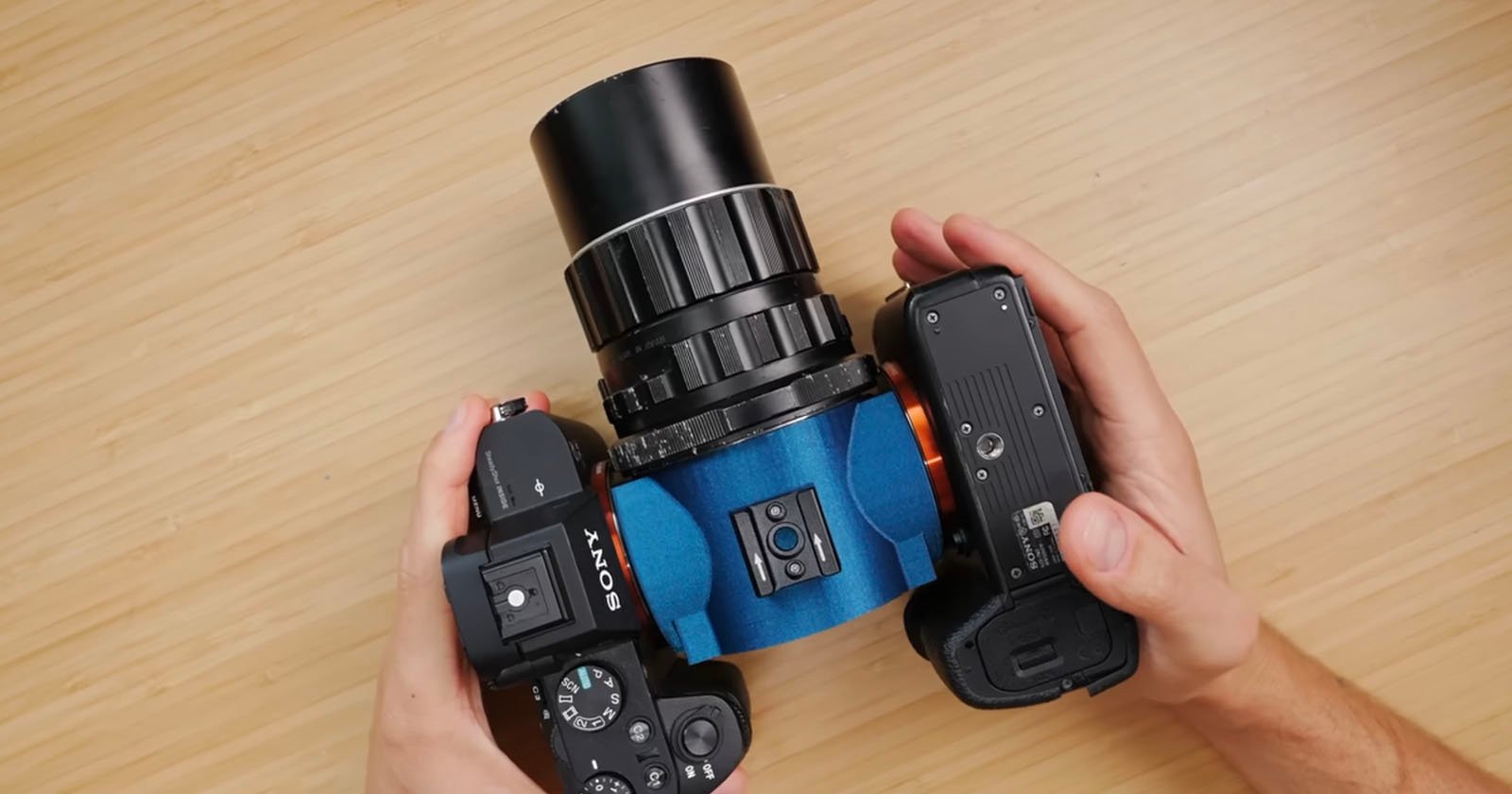Photographer and do-it-yourself enthusiast James Warner, who goes by snappiness on YouTube, is back with yet another crazy project. This time, Warner built a massive 2-in-1 Sony digital camera.
Warner took a pair of Sony a7 II full-frame digital cameras and pointed them toward each other in a central beam splitter attachment to try to create a panoramic digital camera that has a combined 24 x 72mm “sensor,” twice the photographic goodness of a standard 24 x 36mm full-frame sensor.
Panoramic photography is a ton of fun, and while there have been many excellent panoramic film cameras over the years, digital photographers have been forced to either stitch a series of photos together or rely on in-camera crop modes. Heck, even some film cameras use a crop to create a “panoramic” image.
Warner didn’t want to do either of those things, so what if it were possible to have light come through a lens, split, and strike two different full-frame sensors, effectively creating a wider image area?
There are scant few other options for photographers, as companies don’t make panoramic digital image sensors, and even if they did, they’d cost a huge amount of money. Warner is much more focused on accessible solutions to photographic problems.
Warner’s setup centers around a 3D-printed tube that has three entry points. There are two mounting points for his pair of a7 II cameras on either side, and the front has a lens mount for a medium-format lens, as the glass needs to have a large enough image circle to cover two full-frame sensors.
Light enters the lens, like it would on a traditional camera, but is then split in half by a pair of angled mirrors. One sensor sees one half of that large image circle, and the other sensor sees the other half. Both cameras capture a unique portion of the full-frame image area.
As Warner readily admits, it’s not a perfect solution at this point. There are some issues, including slightly imperfect mirror placement that affects image quality on one of the cameras, but it’s an incredibly cool project that shows a lot of promise.
Warner is considering further development on the project, as he is “shocked” at how well the first iteration works.
“I think there’s potential to this idea,” Warner says. “Although it does not work in its current state. I think the mirrors are slightly off, just by a millimeter or two, or something so that both of them can’t be in focus at the same time.”
Warner jokes that the project is “completely pointless,” but given people’s response to it so far, it seems many photographers disagree and are itching for a refined version.
Image credits: Featured image by James Warner (@snappiness)

